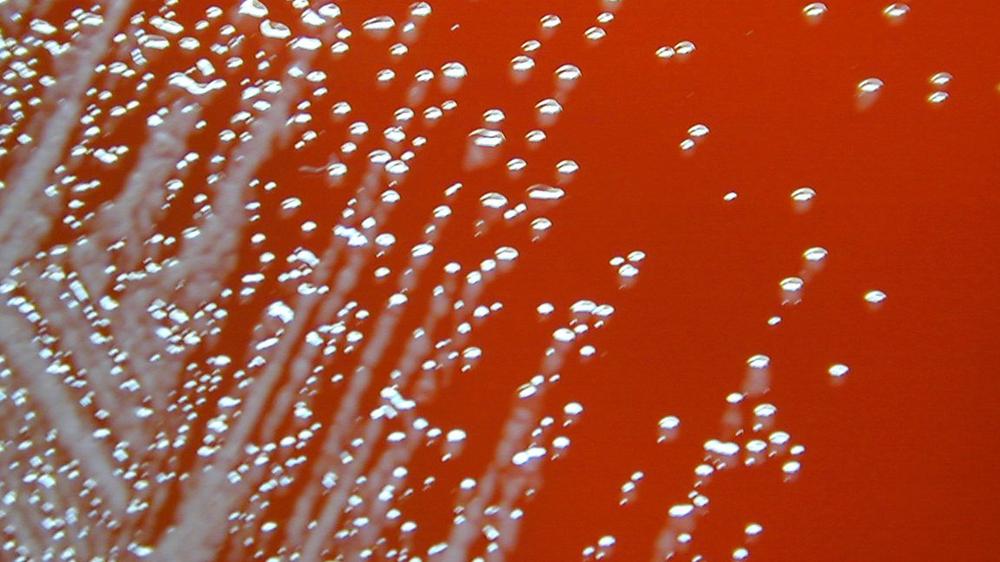Four men in Georgia, all living in the same county, mysteriously became infected with a potentially deadly soil bacterium that's normally found in the tropics and subtropics, particularly Southeast Asia and northern Australia. The four cases were tied together not just by their shared location but also by the bacterial strain; whole genome sequencing showed the bacteria causing all four infections were highly related, suggesting a shared source of their infections.
But this bacterium doesn't tend to jump from person to person. And none of the men had recent travel that explained the infection. In fact, only one of the men had ever been to a place where the bacterium lives, but it was decades before his infection. And there's another twist: The four infections spanned decades. The first occurred in 1983, the second in 1989, and the last two occurred a day apart in September 2024.
In a newly published study in Emerging Infectious Diseases, state and federal health researchers suggest that the four linked cases indicate that the dangerous bacterium—Burkholderia pseudomallei—has been lurking in the Georgia area the entire time. They also think they know what triggered its recent reemergence: Hurricane Helene.
In places where B. pseudomallei is known to be endemic in the soil, infections increase after severe weather events. And Helene certainly fits into that category. The catastrophic storm made landfall in Georgia on September 26, and the two men who fell ill shortly after both worked outside through the severe weather. In fact, they worked at the same worksite that day, where they were exposed to mud, dust, wind, and 10 inches of rain. Patient 1, a man in his 50s, performed vehicle inspections that day and fell ill on September 28. Patient 2, a man in his 60s, operated heavy equipment and fell ill on September 29.
Doctors soon discovered they were infected with the rare soil bacterium, which causes a disease called melioidosis.
Dangerous infection
Generally, melioidosis can be difficult to diagnose and tricky to treat, as it is naturally resistant to some antibiotics. It can infect people if they breathe it in or get it into open cuts. Sometimes the infection can stay localized, like a lung infection or a skin ulcer. But it can also get into the blood and become a systemic infection, spreading to various organs, including the brain. Fatality rates can be as high as 90 percent in people who are not treated but fall to less than 40 percent in people who receive prompt, proper care.
Both men in 2024 were quickly hospitalized and diagnosed with sepsis. Both were treated with heavy antibiotic regimens and recovered, though patient 2 relapsed in November, requiring another hospital stay. He ultimately recovered again.
According to the CDC, about a dozen melioidosis cases are identified each year in the US on average, but most occur in people who have traveled to areas known to harbor the bacterium. Neither of the men infected last year had recently traveled to any such places. So the researchers turned to genetic sequencing, which revealed the link to two cases in the 1980s.
In those cases, both men died from the infection. The man dubbed Patient 3 died in October of 1989. He was a veteran who fought in Vietnam—where the bacterium is endemic—two decades prior to his infection. The researchers note that such a long latency period for a B. pseudomallei infection is not entirely out of the question, but it would be rare to have such a large gap between an exposure and an infection. More suspiciously, the researchers note that in the month prior to Patient 3's death, Hurricane Hugo made landfall in Georgia as a Category 4 storm, dumping three to five inches of rain.
Patient 4 died in October 1983. Though he was also a veteran, he didn't have any recent or prior travel that could easily explain an exposure. There were also no hurricanes in the area in 1983. But the man had long worked on a military base less than a mile from the worksite shared by the two 2024 cases.
Linking cases
Overall, the researchers think the four cases suggest B. pseudomallei is lurking in the environment around the Georgia county where the men were (which the researchers didn't name). The suggestion that the bacterium is endemic in the US isn't new. In 2022, CDC researchers found B. pseudomallei lurking in soil in Mississippi, where two cases that occurred two years apart were linked by genetic testing of the bacterial strain. But modeling suggested that the bacterium might be limited to Gulf Coast states.
The authors of the new study point to another factor for Georgia's potential invasion: the military base. "Introduction and persistence of B. pseudomallei in the environment from repatriation of personnel or equipment associated with the Vietnam War is possible," they write, "but other sources of environmental introduction or local exposure cannot be ruled out."
Ultimately, in order to really know if the dangerous germ had taken root in Georgia, researchers will need positive environmental samples like the ones researchers found in Mississippi. Otherwise, there could be unexpected sources. For instance, in 2021, health investigators determined that four linked melioidosis cases in Georgia, Kansas, Minnesota, and Texas were caused by the contamination of an aromatherapy room spray containing gemstones, which were sold at Walmart. Of the four cases, two died, including a 5-year-old boy in Georgia and an adult in Kansas. A four-year-old in Texas survived the infection but was left with brain damage.

 Apple accuses former Apple Watch staffer of conspiring to steal trade secrets for Oppo
Apple accuses former Apple Watch staffer of conspiring to steal trade secrets for Oppo